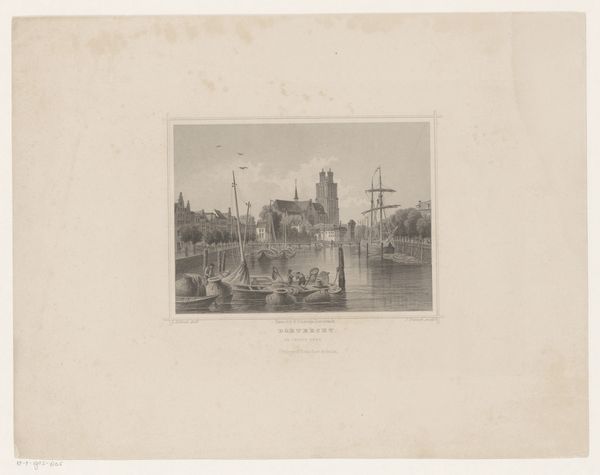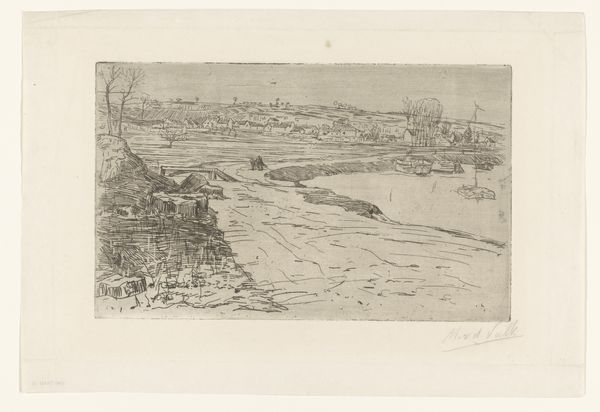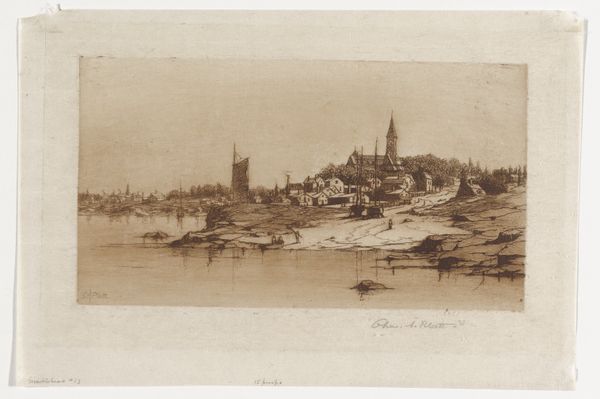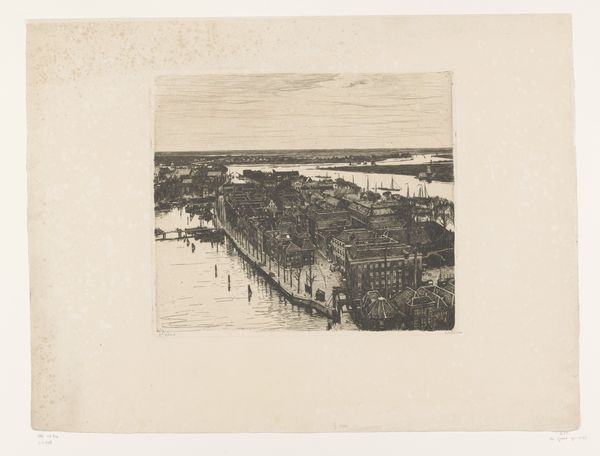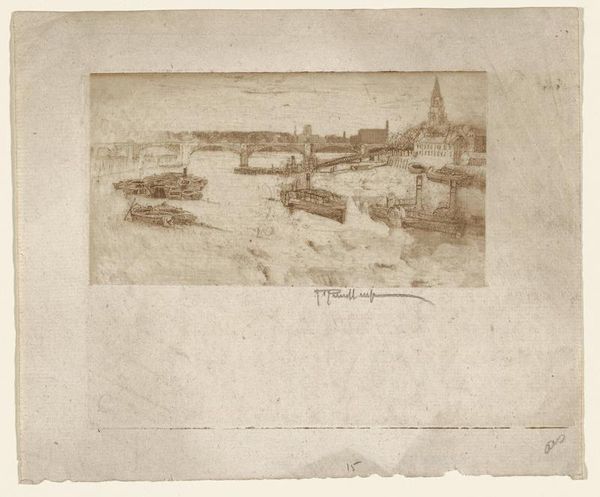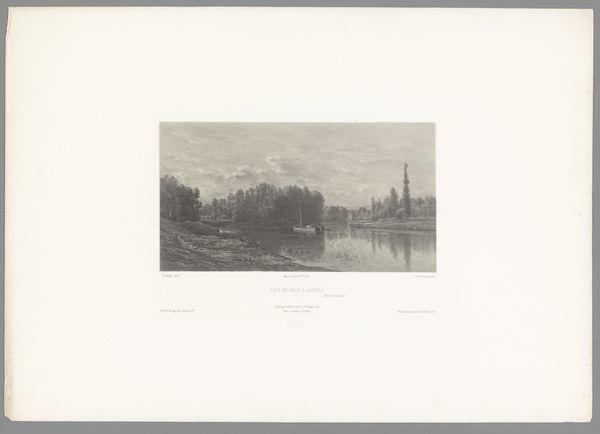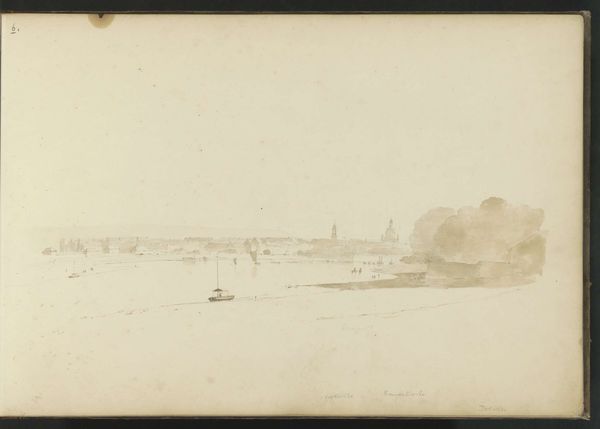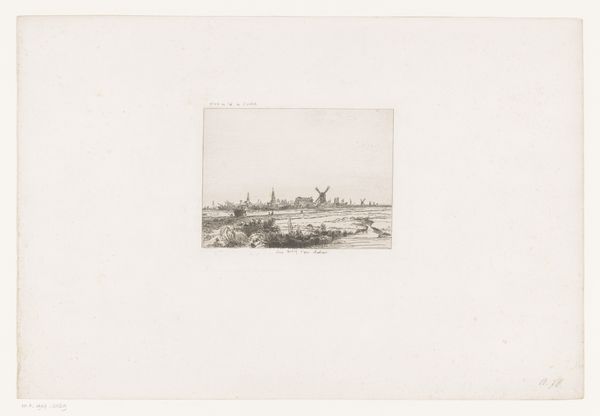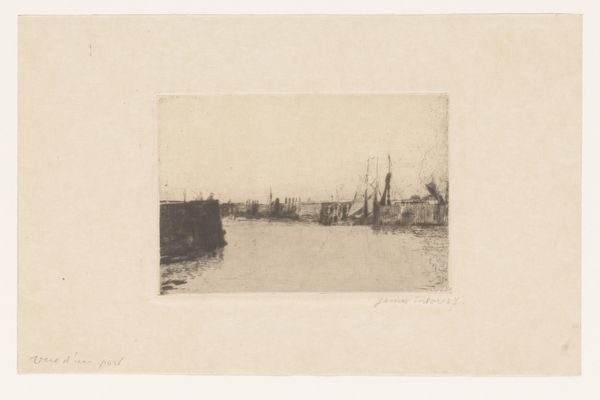
Dimensions: height 170 mm, width 267 mm
Copyright: Rijks Museum: Open Domain
Curator: Welcome. Before us hangs Philip Zilcken's "Stadsgezicht, bij Parijs" from 1913. This print, rendered in etching on paper, offers a glimpse into a Parisian cityscape of the early 20th century. Editor: It has such a hazy, dreamlike quality. The texture, even just visually, is really striking. The subject looks both immediate and somehow incredibly distant, muted. Curator: Yes, the etching process lends itself well to capturing that mood. The labor involved in creating an etching is also important here. Zilcken painstakingly incised lines into a metal plate, then used acid to further define the image, finally resulting in the prints. The printing process made this image reproducible. It’s more than just a depiction of Paris. Editor: Right, and it is more than just process; this print resonates with archetypal images of European cities – the church, the chimney, the old signs and adds an important symbolic weight. It suggests enduring structures but also of change—industrial revolution, modernity and urban development – perhaps a sense of inevitability in the city. The printing looks backwards toward engraving. Curator: True, it brings to mind debates surrounding labor, mass production and reproducibility, as printing became widespread. Did this make images more 'democratic' or diminish their cultural value? Editor: It's about preservation. The old signage especially adds layers. It shows that human touch – that human-made sign or marker is being pushed back or effaced by newer ones but speaks of the earlier 20th century focus on making the city. Curator: Looking at the artwork, and seeing the level of craftsmanship involved reminds us that even something reproducible requires skill and manual labor. Zilcken’s process helps bring this out in the work. Editor: Thinking about how we use and interpret symbolic urban spaces now is just one facet of this art, really. It feels so personal and relatable at the same time. Curator: It’s interesting to view through the lens of art history, and a timely reflection of how the printing processes are valued, as artistic means, versus today. Editor: Exactly. A visual emblem of our continued evolution in the collective, cultural conscious.
Comments
No comments
Be the first to comment and join the conversation on the ultimate creative platform.
